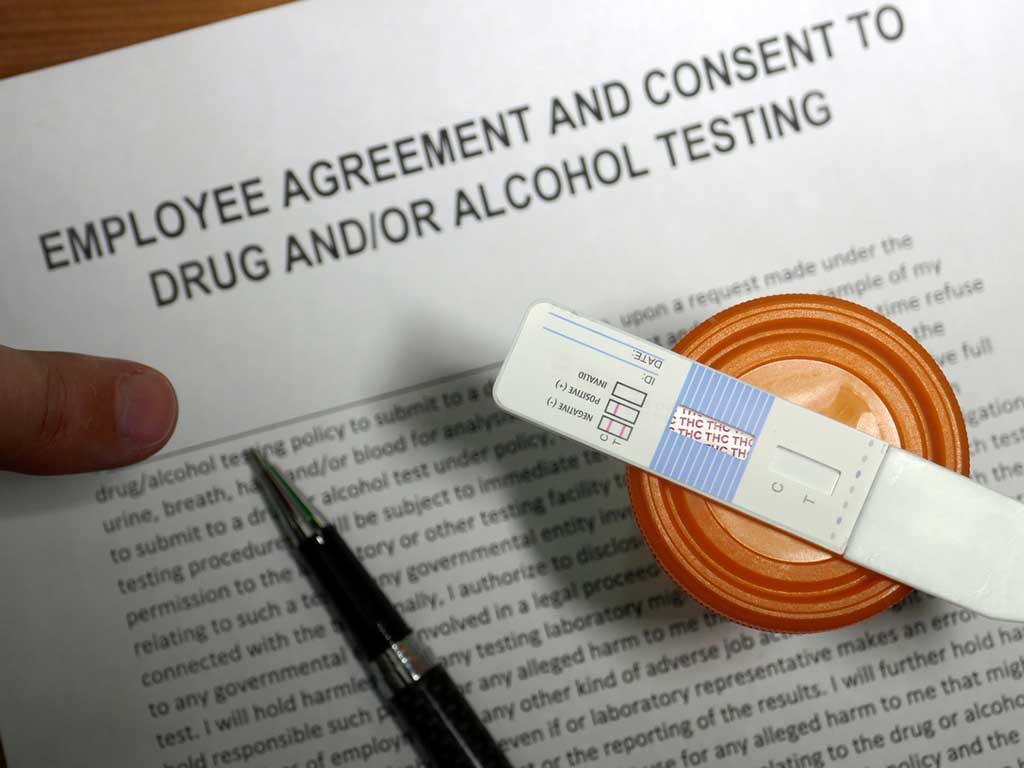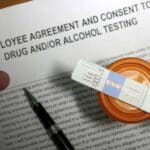Alcohol And Drug Misuse Policy: Objectives, Types of Tests, and Disciplinary Actions
07 November, 2023

A comprehensive alcohol and drug misuse policy is essential for the well-being of employees and the company. Its scope may include everyone in the workplace and cover substance use on and off company premises. Its objectives are to promote workplace health and safety and mitigate legal risks. Companies may include several tests, such as blood, hair, urine, saliva, and breath screenings. Moreover, non-compliance with the policy may result in warnings, suspensions, or termination of the worker.
Substance abuse leads to decreased productivity, increased accidents, and potential legal liabilities. Companies may experience many problems if they do not provide intervention for substance abuse-related issues. This includes additional safety risks that may endanger everyone in the company. In addition, they may encounter issues in maintaining a stable workforce. This article will present the objectives, types of tests, and sanctions included in a substance use policy.
Alcohol And Drug Misuse Policy – Scope and Objectives
An alcohol and drug misuse policy outlines the scope and objectives of the company in addressing substance use-related problems. These policies aim to establish guidelines and procedures to prevent misuse of alcohol and drugs. It may include all employees, contractors, and visitors to the workplace. In addition, it may cover the use of alcohol and drugs both on and off company premises.
A policy may have several objectives it aims to fulfil. Firstly, it may promote workplace health and safety. There are many adverse effects that substance abuse may cause in the workplace. Establishing a clear policy may deter employees from the misuse of drugs and liquor. This helps protect everyone in the workplace by promoting good health. It also reduces the risks of accidents by ensuring safety critical roles are fulfilled by sober individuals.
Another objective is to mitigate legal risks. Accidents may cause employees to seek legal action against their employers. Legal proceedings may become lengthy and costly for the company. Furthermore, employers and employees must comply with the relevant laws and regulations.
Effects of Substance Abuse in the Workplace
There are several adverse effects of alcohol and drugs. These are some of them:
- Substance misuse increases absenteeism and tardiness among employees.
- Substance abuse causes strain within work relationships and increases tension between co-workers due to irritability and erratic behaviours.
- Misuse of alcohol and drugs increases the risks of accidents that may cause injuries or deaths.
- Substance abuse lowers productivity because it decreases physical and cognitive abilities.
- Substance abuse-related accidents increase the medical and insurance expenses of the company.
- Drug and alcohol misuse may result in high turnover rates among employees. This makes it difficult to maintain a stable workforce.

Alcohol and Drug Misuse Policy – Types of Tests
An alcohol and drug misuse policy should indicate which tests will be used. Companies may use several drug and alcohol testing procedures in their policies. Firstly, urine testing is the most standard testing method. Urine samples may contain traces of substances for up to 24 hours. Additionally, ethyl glucuronide (EtG) tests may detect alcohol consumption for up to 80 hours.
Secondly, saliva tests are typically used during onsite testing. For this test, saliva samples are gathered from under the tongue or inside the cheek. It has a detection window of 12 hours. Thirdly, hair follicle tests have the lengthiest detection period. It may find traces of the substances consumed within 90 days.
Fourthly, blood tests are considered the most accurate tests. These tests have a detection window of 12 hours. However, using carbohydrate-deficient (CDT) and Phosphatidylethanol (PEth) tests may detect consumption of alcohol weeks before collection. Lastly, breath tests measure the Blood Alcohol Concentration (BAC) levels of an individual within 24 hours of consumption.
Commonly Detected Substances
Various tests may detect a wide range of substances. The substances traced depend on the panels used during analysis. They may test for alcohol, illegal drugs, and prescription medicines. The most commonly detected substances are ethanol, cocaine, marijuana, amphetamines, opioids, and phencyclidine (PCP). These are addictive substances that have varying effects.
Ethanol is an active component of many alcoholic beverages. Meanwhile, marijuana is a psychoactive substance that comes from the cannabis plant. Cocaine is a stimulant drug made from the leaves of the coca plant. Lastly, opioids are commonly used for pain relief. Heroin and morphine are also included in this classification.

Alcohol and Drug Misuse Policy – Sanctions for Non-Compliance
Companies may include various sanctions for non-compliance in their alcohol and drug misuse policy. Non-compliance may involve refusal to take a test or a non-negative result. However, employees may ask for confirmatory testing to protect themselves from false positive results. If the subsequent outcome still shows a positive result, they may face disciplinary measures.
Disciplinary procedures may include warnings, suspensions, and termination. This is because misuse of drugs and alcohol may result in accidents with severe consequences. By enforcing fair and strict disciplinary action, companies may solidify their commitment to promoting workplace health and safety. Additionally, they may also do this by adding substance abuse prevention strategies to the drug and alcohol policy.
Typically, verbal warnings are the first measures of minor offences. Then, written warnings are issued to preserve documentation of misconduct. Generally, suspensions may occur after a subsequent violation. This period is meant for the employee to reflect on their actions or seek help. Lastly, termination is enforced after several reoccurring offences or severe incidents.
Substance Abuse Prevention Strategies
Substance abuse prevention strategies are essential in addressing problems caused by the influence of alcohol and drugs. These strategies aim to reduce substance abuse within the workplace. It may include various approaches, such as education and awareness campaigns. Companies may benefit from informing workers about the adverse effects of abusing illicit drugs, prescription medicines, and liquor.
Furthermore, they may appoint safety representatives to monitor the safety of employees. Reporting individuals suspected of intoxication during business hours may prevent potential alcohol and drug-related problems. In addition, organisations may revise their drug and alcohol policy regularly to ensure the regulations are up-to-date.
Conclusion
An alcohol and drug misuse policy is essential for maintaining workplace safety. Substance abuse causes many adverse effects within the workplace. Thus, a policy should aim to protect the health and safety of the employees. This will also help the company mitigate legal risks and comply with the relevant laws and regulations. Companies may enforce disciplinary action to emphasise their commitment to their policy. It may include warnings, suspensions, and termination, depending on the severity and number of violations.
Organisations may use several testing methods to identify substance abuse. These include hair, blood, urine, saliva, and breath tests. Typically, these tests detect intake of ethanol, marijuana, cocaine, opioids, amphetamines, and PCP. To prevent undue repercussions from false positives, companies may also provide confirmatory testing. For quick and reliable measurement of BAC levels, some workplaces may benefit from using BACtrack breathalysers from Breathalysers Australia.






























